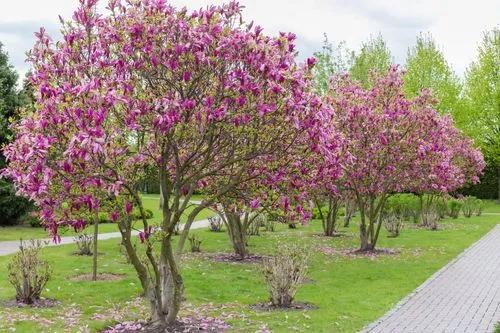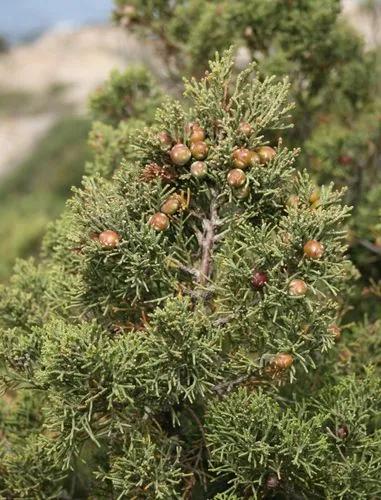Alnus glutinosa, commonly called black alder (also common alder or European alder), is a small to medium-sized deciduous tree that is distinguished by its gummy young twigs and leaves and its obovate to rounded, glossy dark green leaves (to 4” long) with doubly toothed margins and blunt to sometimes notched apices. As a single trunk tree, it typically grows to 40-60’ tall in cultivation (to 100’ or more in its native habitat) with a narrow pyramidal form. As a multi-trunked tree, it grows much smaller and spreads. It has naturalized in many parts of eastern North America, particularly along streams and in low or swampy sites. Flowers are monoecious. Drooping male catkins (to 4” long) form in fall and overwinter on the tree. Small, plump, rounded female catkins form in late winter to early spring. The catkins flower in March before the foliage emerges. After flowering, the female catkins develop into 3/4-inch long woody cones (strobiles), with winged seeds forming therein. The seeds disperse in fall at maturity, but the woody cones typically remain on the tree over winter and persist into the following growing season. Alders are easily identified in winter by the presence of the drooping male catkins and the woody cones, both of which are ornamentally attractive. Winter branches are often added to floral arrangements. Dark brown bark with warty striping gives rise to the black alder common name. No appreciable fall color. Nitrogen fixing microorganisms develop in nodules on the tree roots in somewhat the same manner as with the legumes.
European Alder Care
Alnus Glutinosa



How to Care for the Plant

Water

Water regularly and generously for several weeks after planting, especially if you planted late in the season.

Pruning

The alders can easily be pruned at ground level, they will groww back. Otherwise, in late winter remove dead branches, those that come back inwards and those that cross, to lighten your alder.

Sunlight

Full Sun

Soil

Prefers a heavy soil and a damp situation tolerating prolonged submergence of its roots and periods with standing water to 30cm deep. Plants can also grow quickly in much drier sites, though they will usually not live for so long in such a position. Alders grow well in heavy clay soils, they also tolerate lime and very infertile sites

Temperature

Alder is estimated to tolerate an annual precipitation of 40 to 200cm, an annual average temperature of 8 to 14°C and a pH of 6 to 8

Popularity

368 people already have this plant 88 people have added this plant to their wishlists
Discover more plants with the list below
Popular articles






